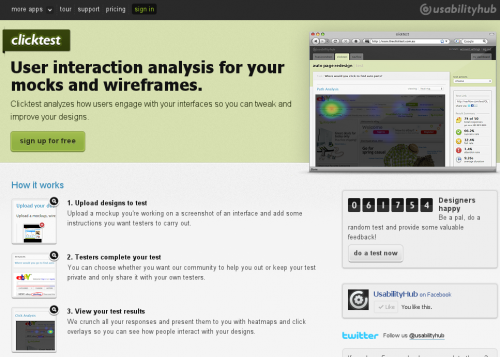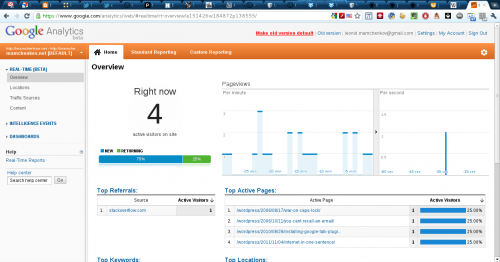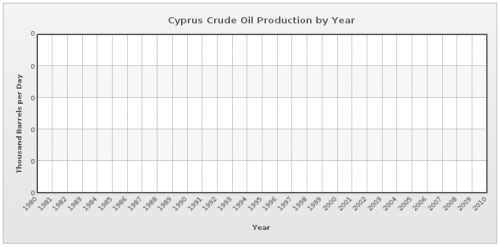When I came across The Click Test this morning I had one of those “why oh why didn’t I think of this myself?” moments. Both the idea and implementation are very simple, but extremely useful for anyone involved with interface design, usability studies or web development. When you want to try out a design or user interface concept or element, when you don’t know which version works better, or if you want to find out which element stands out for most people, you need a usability study, and The Click Test gives you everything you need to do one quickly. All you need to do is upload your design and ask the question. It will then be shown to a bunch of people who will answer your question by clicking somewhere in the design. You’ll see the results of your study as a heat map of user interaction. That’s it.
There are applications, even in a form of WordPress plugin, that would allow you to do a similar study directly on your website. That’s not news. But heaving a crowd of people to use for your test – now that’s brilliant. Now you can actually test something before putting it on the live website.



